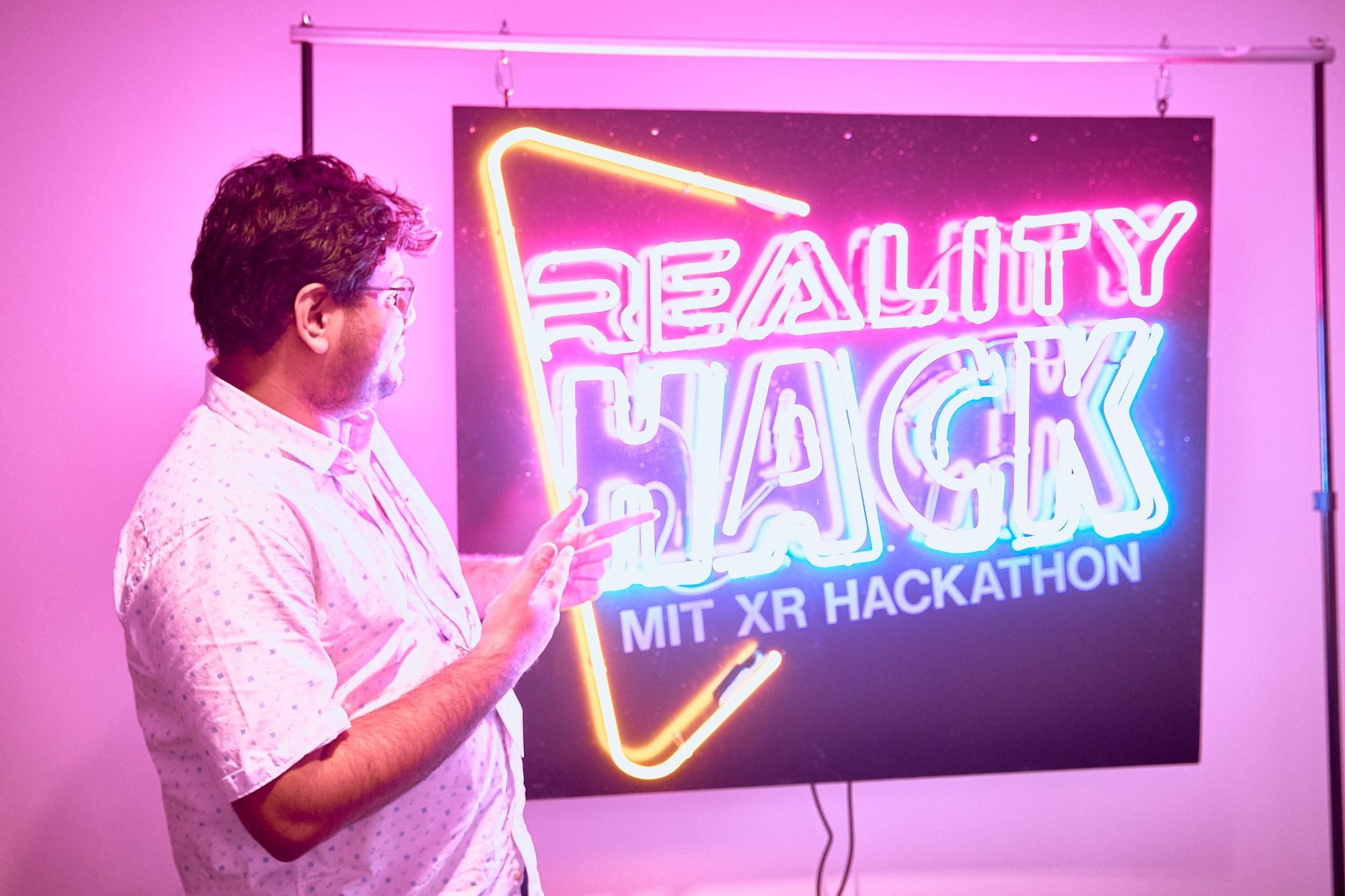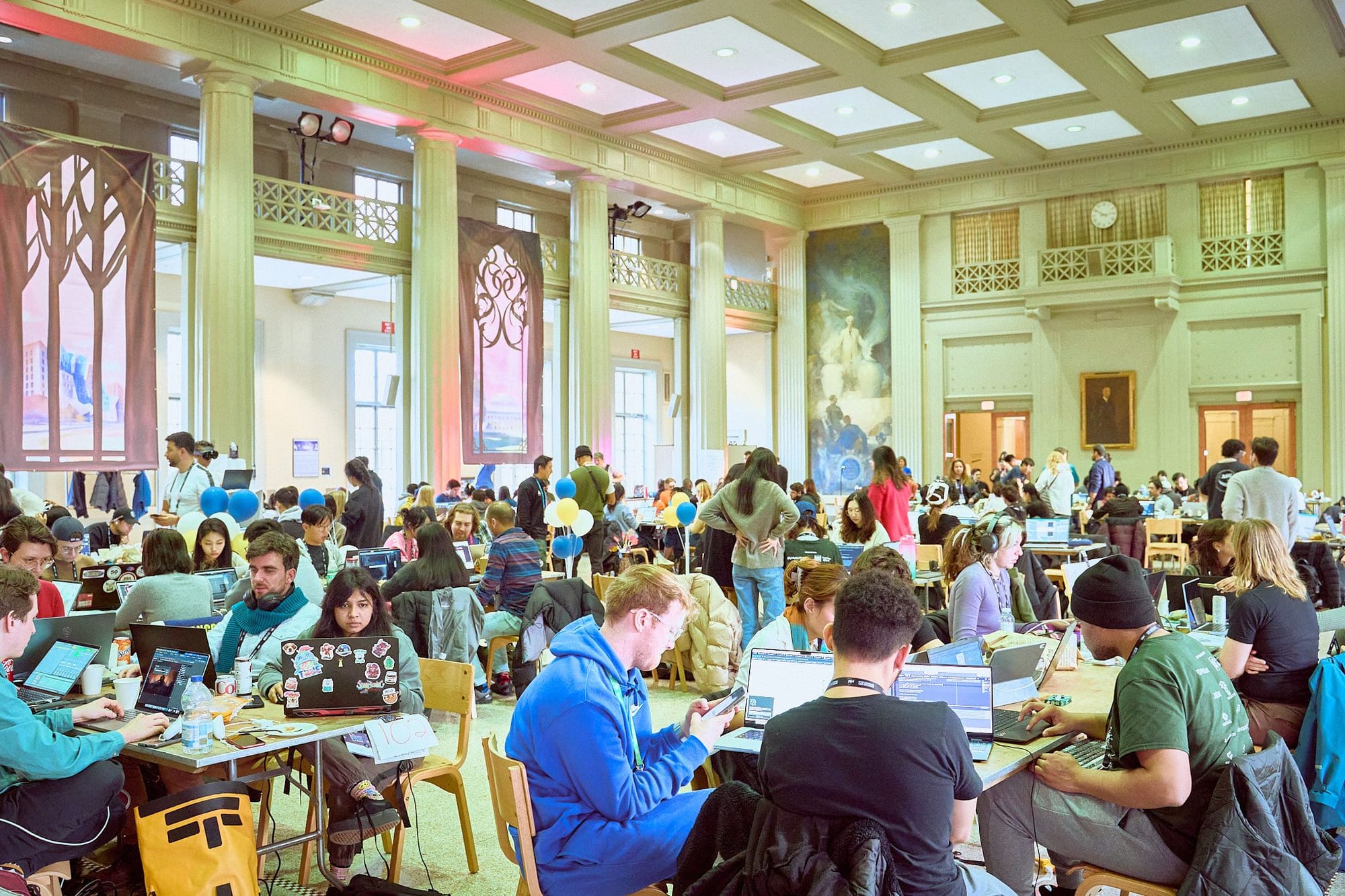Looking Glass at MIT Reality Hack 2024
Joining the MIT Reality Hack 2024
This year, a few members of our team at Looking Glass attended the MIT Reality Hack 2024 as judges, sponsors and mentors. Like the years that came before, it was another incredible opportunity to connect with the incoming generation of XR developers, creators and artists to collaborate on pushing boundaries in immersive technology—especially in this new era where spatial computing is taking flight right before our eyes.
More than ever before, we’re excited to see how Looking Glass fits in the broader ecosystem where headsets and holographic displays will likely exist alongside each other, as the interfaces of the future.

Mentoring the Next Generation of XR Developers
As sponsors of the event, we spent the first few days supporting participants by sharing our expertise in building for Looking Glass displays. Jake Adams (aka ValHolo), a professor at RIT and creator of the first holographic comic Aphid through the Looking Glass, joined us to provide his accumulated wisdom on his years of developing for the Looking Glass. He was the perfect person to lead workshops around this and use of the Unity plugin given his prior work with the medium.
Throughout the event, we also held various other workshops covering topics like storytelling in AR/VR and advanced techniques for 3D asset creation using Blender and WebXR. Our team was on site to provide hands-on guidance, helping to troubleshoot issues, and encouraging hackers to think outside the box (quite literally in some cases)—which many of them did (results to be shared in a follow-up post)!
Beyond just the technical aspects, we also aimed to foster a spirit of collaboration, which is core to what holographic displays represent to us: the idea that holograms are made to be shared, with groups of people at a time. All in all, the Reality Hack brought together 600+ incredible minds from diverse backgrounds, eager to push the frontiers in this expanding field. Being able to exchange perspectives in person made the experience truly valuable and we’re already eagerly anticipating next year’s hack.
A Shared Reality
The Reality Hack serves a greater purpose than some might think: it helps bring together the XR community with the goal of advancing the field as a collective unit. As Harry McCracken, the Global Technology Editor at Fast Company noted after attending and judging this year’s hack:
At MIT, however, the rawness of XR and its subcategories felt like a pro rather than a con. In ways that might be tougher in a better-established field, it provided a tapestry for wild experimentation that transcended plenty of my preconceived notions.
We also believe progress requires a village. That's why we continue to support groups like the MIT Reality Hack that demonstrate the power of collaboration for human-centric XR and believe that the future is and should be designed for all, not just for the few.

After an inspiring week, we headed home with renewed energy. The Reality Hack made clear that the future of XR is in capable hands. We can't wait to see what this community dreams up next. Congratulations again to all the winners!
Follow along for our follow-up post about the Hack which will include highlights from the few groups that used Looking Glass displays as part of their final submissions.
